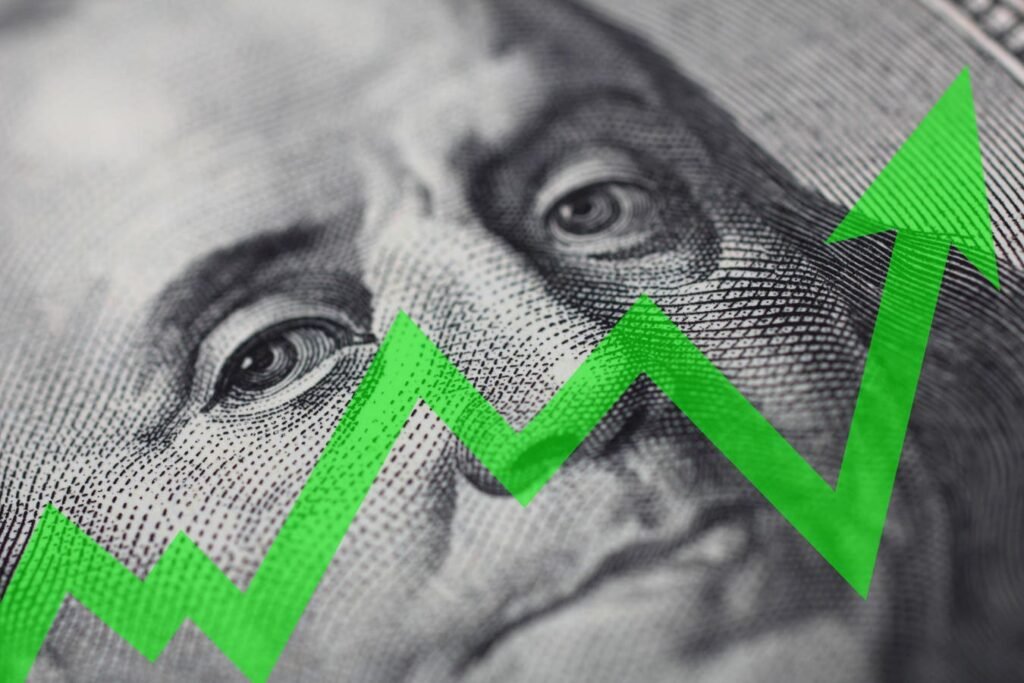Getty
Key takeaways
- Inflation has been high for several months, but the Fed has managed to bring it down from a peak of 9.1% in June of last year.
- The latest CPI figures stand at 3.7%, up over the past two months.
- It is likely that we will continue to see rising inflation in the near term, and further rate hikes may be on the cards given the Fed’s determination to bring it down to around 2%.
We’ve all heard a lot about inflation over the past couple of years. We’ve seen the big numbers and we’ve felt our own bills increasing every month, but what does it amount to over the course of the year?
Because yes, the holiday season is really approaching, which means 2024 will be here before we know it.
But it’s not enough It’s time to think about increasing the price of our turkey and pumpkin pie this year. So let’s see exactly what happened with the cost of living in 2023, its impact on consumers and what the outlook is for 2024.
What is inflation?
Before diving into the numbers, it’s worth quickly reviewing what we mean by “cost of living” or even “inflation.” We all understand what these terms mean, how quickly prices rise for the goods and services we use every day.
From bread and milk to gasoline, tuition fees and plane tickets.
But the reason it’s important to be precise is because there are multiple ways to measure it. In practice, it is not possible for any member of the government to measure the increase in the cost of every good and service sold in the United States.
This would be the only way to get the real, 100% accurate inflation rate. And data collection would likely cost more than the annual military budget.
This is why different measures of inflation are calculated using a basket of goods. These are specific items and categories chosen to represent a broad sample of the most common goods and services in the country.
The Consumer Price Index (CPI) is the most well-known, and is usually what people are referring to when they use the term “inflation.” But the other major measure particularly relevant to the Fed and interest rates is the Producer Price Index (PPI).
This is similar to the CPI, but instead of measuring the change in prices of consumer goods, it measures the change in prices at the wholesale level. This can be a good indicator of future inflation at the consumer level.
Inflation until 2023
So, what has CPI done in 2022 and 2023? Well, it’s no secret that inflation was at a breakneck pace last year. The CPI rate hit a stunning high of 9.1%, the highest level seen since the early 1980s.
In an attempt to bring down inflation, the Fed has significantly increased interest rates. This increases the cost of borrowing, meaning consumers have less money to spend. This lower spending means less demand for goods and services, which lowers prices.
At the end of 2022, inflation fell, but still stood at 6.5% at the end of the year. The downward trend continued into early 2023, with the annualized CPI rate falling to 3% in June.
This is very good news, but unfortunately it does not mean that the battle is won.
Since June, the CPI has started to slowly rise again. Rising to 3.2% in July then remaining at 3.7% in August and September. It’s not a big deal, but the fact that this phenomenon has resurfaced makes some analysts nervous.
There are fears that these modest hikes could prompt the Fed to raise rates again, which would cause enormous volatility in bond markets and make financing incredibly difficult.
Real inflation figures
To break this all down a little more, it’s important to keep in mind that inflation is a retrospective measure. When we see that inflation increased by 4% last year, this means that goods are 4% more expensive today than they were a year ago.
This means the cost of living has increased, but it also means you’ve already experienced the change. Theoretically, there is nothing to say that high inflation figures today mean that high inflation will continue in the future.
Another point to note is that inflation very rarely turns negative. This is called deflation, and it’s when prices fall over time rather than rising. This may sound like a good thing, but it happens during a time of major economic crisis, when widespread job losses and financial losses reduce demand for goods and services.
So while a price drop may seem nice, it’s probably best not to want it.
The essential
Although inflation remains higher than the Fed would like, it has fallen significantly from 2022 highs. The Fed is expected to continue raising rates as much as it wants in order to bring them back at their target range of around 2%.
What does this mean for investors and consumers? Well, that means we’re likely to experience more volatility and financial distress. Rising costs are causing household budgets to tighten, and while strikes and wage pressures are prompting many workers to seek better pay, there is no guarantee that this will fully offset rising prices.
Of course, the most interesting thing is that at the same time as our household bills have increased significantly, the cost of financing has also increased. Credit cards, car loans, and mortgages are all much more expensive than before, due to much higher interest rates.
This increases pressure on the average household.
This situation will not be forever. The Fed will likely reach its goal at some point, but we could find ourselves in for some tough times in the meantime.

